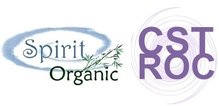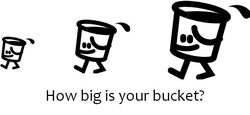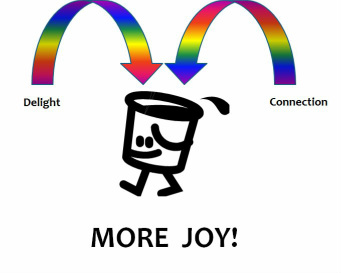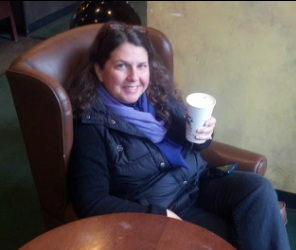 Listener extraordinaire: our cockapoo.
Listener extraordinaire: our cockapoo. I have so much to say about listening. About how I learned to listen. About how important it is to be a listener. About my struggle to learn how to listen fully and then allow myself to respond instead of just plotting my clever response while the person continues to talk (and I am no longer listening). About how grateful I am that I learned to listen to my children. About how sad I am that I wasn’t always good at it, that I missed some things that I wish I had heard more fully when I was too busy, tired and/or overwhelmed.
First, my babies taught me to listen. Then I learned some practical skills in Reflective or Active Listening as a childbirth educator and La Leche League Leader. Then I took a course in Re-evaluation Counseling and that taught me the value of ONLY listening. Then I started my training as a craniosacral therapist, which requires profound listening.
Truly listening means that I trust that the person I am listening to has something valuable for me to comprehend or notice. Sometimes I lose track of that, but when I do manage to listen intently, I am rewarded with a tremendous sense of peace. Even if the situation is asking me to notice something disturbing, by listening I can stay in a place of accepting the realty at hand instead of hoping for a different version. Listening doesn’t support magical thinking; it supports radical acceptance.
Listening requires that I put my responses aside. If my monkey mind starts bouncing around, I ask it to still so we can be in reception mode. Action will come, but after we listen.
So how does this apply to children and clients and clients who are children? Children train me to listen because they have excellent fraud detectors. They know when I am not attending to them. They will not make excuses for my lack of listening. If I have promised to listen and I wander off, they will either call me on it and give me another chance, or they won’t trust me anymore.
When I am truly listening I am not assigning a value to what I am hearing. I am just listening. For example, do you know someone like this? They go to a movie (or they watched a television show or they came up with a solution to a problem) and they really loved it, so they need to tell someone all about it. And, since you are their special someone, you get to listen to their download of the whole blow-by-blow experience. I call those people talkers. I am married to a talker and we spawned another talker. Some people might call them verbal processors. I don’t know if that fits, because they usually aren’t looking for any input or any kind of a solution, they are looking to share with me this wonderful experience that they had.
I need to remember that these “unimportant” things are very important. When I listen to the downloads I am affirming my caring. When a client goes on about “unimportant” things they might be testing me. “Is she really going to listen to me, no matter what I tell her?” When I demonstrate that I am listening to all of it, then a quiet significant something might come. A quiet significant something that needs complete safety to emerge. We may just sit with that quiet something or maybe something else will happen, but we will both be different because we were both there when that quiet significance emerged.
When I am listening deeply I don’t need to pounce on that significant something. I don’t need to label it, change it, fix it, even if it scares me. I just need to love it, to love the person sharing it.
I wish I had more of this understanding with my kids. Often, with the significant somethings I wanted to spring into action and make the world safe and happy again for my daughters. But that action just communicates that I don’t trust that they will find answers of their own (with our help, if they ask for it, and the help of others in their lives) or that I fear the world is such a dangerous place that it is impossible to find a good solution for them. And this is true for therapists, too: I need to believe that my clients’ inner wisdom knows what is best for them. Instead of solving the problem, can I just witness their situation and their own insight? When the client senses that I can be a witness to their natural goodness and resources then they can also access those strengths and put their strengths to work on the problems.
It's not about my ability to say something insightful and "helpful", it's about my ability to listen and then respond from my heart.




 RSS Feed
RSS Feed